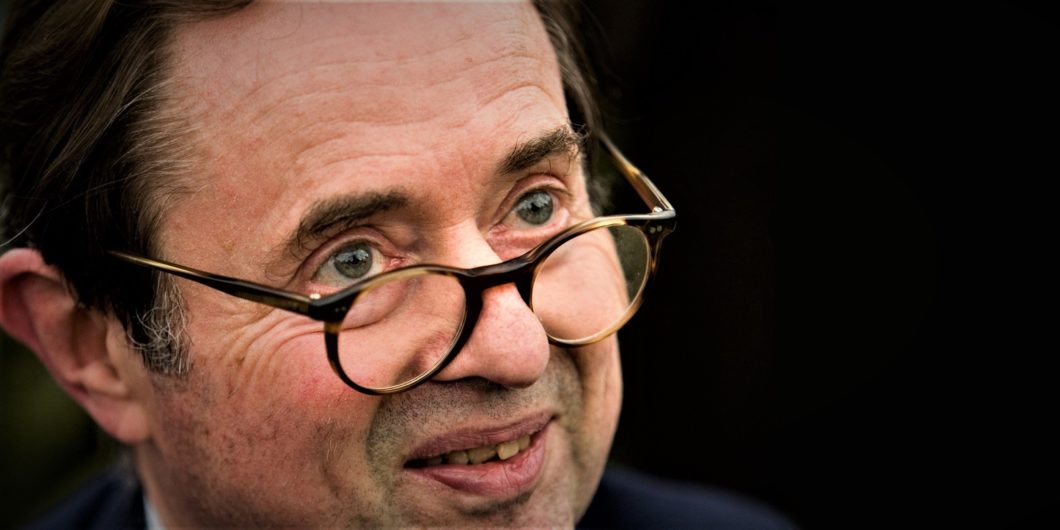The Soviet Union showed its Western sympathizers how brutal illiberal governments can be. Right-wing nationalists are now learning that same lesson.
Portrait of a Cold War Intellectual
“No name-dropping,” David Pryce-Jones learned from Sybille Bedford. It “wasn’t done to write about one’s friends, and besides, if they were famous it was snobbish,” admonished his Eton headmaster after a young Pryce-Jones had done just that.
Pryce-Jones heard but did not listen, and in consequence, we have this book, Signatures. Consistently suave of style, occasionally feline, exasperatingly self-indulgent on one page, worldly-wise, penetrating, and candid on others, Signatures gathers together Pryce-Jones’s impressions of those authors who at any time presented him with a signed book for his library. The contents are arranged alphabetically, from Mahmud Abu Shilbayah and Harold Acton to Michael Wharton and Alexander Yakolev, but along that crude shelving we find a variety of materials so great that it could not well serve the end Pryce-Jones rather lamely proposes at the outset, to contribute indirectly toward an autobiography.
And yet, if one is willing to stick to it, through stretches of the incidental, the elliptical, and, of course, the praise others make of the author exactly recorded, two constellations come into view, neither quite amounting to a portrait, but both of genuine historical and literary value. The first is what justifies the strange construction of this book. Pryce-Jones has published ten novels and has indeed both an elegant prose style and the novelist’s eye for the prosaic detail that illuminates without explaining. The loose form of these sketches allows that eye leisure to denote stray images and telling gestures of artistic beauty, portentous depth, and intrinsic interest.
The second could probably be better gleaned elsewhere, though I would not know where to look to find it so pithily accomplished, and so I accept with gratitude what we have been given here. Pryce-Jones gives us an interpretation in little of the great ideological crises the West has faced from the Second World War to the present. He does this by reflecting on those persons and intellectual and social events that together worked to form a callow young leftist into a Cold War intellectual of the Tory cast, one who had already achieved an important career during the decades of the Cold War, but then, upon its conclusion, proceeded to study its various conflicts and become a significant historian. It amounts to an accidental primer on how to think about the world if one has lived through the age of England’s decline from Empire to welfare state.
A descendant of Continental nobility, Pryce-Jones was born in Vienna in 1936, and the formative horror of his first years was flight into exile from the Nazis that ended only with his arrival in England. Of Jewish ancestry, and with a literary father (whose name I knew, alas, only from his mention late in John Betjeman’s A Summoning of Bells), Pryce-Jones’s life has been one that bore first-hand witness to the defining atrocities and upheavals of the 20th century and one, moreover, where he became personally acquainted with many of the persons who shaped that history.
The Novelist’s Eye
First, let us appreciate those fine fragmentary portraits of personalities that make this book something of a pleasure to read. Svetlana Alliluyeva, Stalin’s daughter, is sketched as characteristically Russian in her violent extremes, suicidal one minute, pedantically intellectual the next, snobbish in Wales, yet content finally to cash in on American welfare in Wisconsin. Arno Breker, the German sculptor who accompanied Hitler into Paris after its surrender, is evoked as the very type of the unprincipled artist winning reputation by force rather than ability. Arthur Koestler is well observed in the process of transforming himself unsuccessfully into a lecherous but stuffy Englishman. Irish novelist Edna O’Brien, best known for her books’ exposure of the weaknesses and repressions of Irish society, suddenly prostrates herself in the nave of the Church of the Holy Sepulchre. The broken and boarded-up windows of a Berkeley classroom, during the height of the protests against the war in Vietnam; the know-nothing students clamoring for “a future that declined to be born;” these and myriad other tableaux are formulated precisely and reward one’s casual attention.
Pryce-Jones can be especially illuminating on the authors with whom he had more than passing interviews. Much has already been reported of the well-known slovenliness and pathetic disorder of W.H. Auden’s habits, for instance. Pryce-Jones nonetheless manages to deepen the untidy portrait. One night in his student days, he happens upon Auden in the quad, while returning home from a drinks party. Another friend, who has had too much to drink at that same party, also comes by and they join Auden in his room. Once there, the friend proceeds to become “violently sick all over the papers and notebooks on Auden’s central table.” Nothing could be salvaged, but Auden takes it with equanimity.
Pryce-Jones sees with clarity the mortal stakes of the Cold War, stakes made all the greater because the rabid ideology of communism so readily lent itself as a sanctimonious mask to mere miscreants.
This seems rather saintly on the poet’s part, until one considers it in light of what Pryce-Jones reveals in a separate sketch of an aged Auden. Visiting Auden’s last residence, the famous house in Kirchstetten, where he resided with his former lover Chester Kallman and, evidently, a “Greek teenager,” Pryce-Jones observes the logophilic details of Auden’s study in the loft of a barn. All seems brilliant and pedantic in the best Audenesque way. With the arrival of the evening cocktail hour, however, Auden begins to take in martinis from Kallman, until he is long “past making sense.” He is then put to bed like a besotted infant:
They gave him a flask of Chianti, and he lay on his side sucking at it like a baby with a bottle, gurgling, splashing red wine now and again onto the sheets and over himself.
The next day, Kallman and the teenager head to the gay bars of Vienna, leaving behind Auden—whom, we presume, is too old, too helpless, too boring—to wait for them in the lobby of a hotel.
This would seem merely sordid gossip did it not communicate something unfortunate but consequential. Auden’s poetry thrives on its honesty of style and its moral and autobiographical testimony regarding how to live a humane life. A rebellious and leftist youth, he relearned the lessons of his ancestors to become the conscience of an age and a steward of tradition in a forgetful and anxious time. It also shows us a man with feet of clay, but one who examines himself unsparingly and, only after, attempts to judge the world justly and fairly, meeting its imperfections with candor and mercy. What once seemed winsome and wise begins to appear convenient and easy as one views the poetry in light of the man. This Auden appears not as someone who learned from his own foibles and struggled toward a golden mean, but rather one whose sententious wit on the page evaporated the moment he turned away from it.
Kingsley Amis comes off similarly diminished, though in the more conventional manner of being shown for a Tory in politics and a vulgar libertine in everything else. In this he makes a nice contrast with Cyril Connelly, who “took opinions from the left and dined on the right.” Laurence Durrell’s faded literary reputation is briefly dispensed with in the noting of his “blue shirt and white shorts so ill-fitting that his private parts were exposed.”
Pryce-Jones’s finely parsed and minutely telling observations are, again, a pleasure in themselves. On a handful of occasions, they build up into striking critical essays on those writers he knew best. On Theodore Dalrymple, Robert Conquest, and John Gross, among others, he is informative; regarding the former Jesuit and poet, Peter Levi, the Nobel-prize-winning V.S. Naipaul, and the great Catholic convert and novelist Muriel Spark, his memoirs must become part of the permanent record.
Seeing through the Movements
But there is, as I say, a second constellation of portraits in this volume and it is one of a much more serious kind. Having lived through the great wars of ideology of the 20th century, having known the participants, and indeed having written a great deal about some of them, Pryce-Jones details his encounters in order to suggest what personal contacts led him to his well-known judgments.
Of the Arab-Israeli conflict, he has long been on record as having concluded that Arab societies are too driven by honor to let go of the defeats they have suffered. The failure of a Palestinian state to emerge is thus no loss. The age of the British Empire is, conversely, not to be regretted.
The Soviet regime was “a criminal enterprise from first to last,” one driven by opportunism and internal politics rather than ideology. Being so morally bankrupt, it was in no position to stave off its “strange death” when the people began to resist. The fellow-travelers in the West were no less compromised, though. Pryce-Jones candidly observes his own youthful embrace of the privileges of his birth and the leftist politics that would destroy them. He offers similar appraisals of the less callow, more disreputable Eric Hobsbawm, and the excessively politic and equivocating Isaiah Berlin. One senses in every tableau that Pryce-Jones sees with clarity the mortal stakes of the Cold War, stakes made all the greater because the rabid ideology of communism so readily lent itself as a sanctimonious mask to mere miscreants.
But Pryce-Jones is most informative on the Nazis and those who caved to them, whether fellow-traveling enthusiasts for Hitler, such as Unity Mitford (on whom he published a book), or the French. The death of the Soviet Union was “strange” in its way, writes Pryce-Jones, but there was nothing strange about the Nazi occupation of France: the French were simply unwilling to fight and die for their country and were all too willing, in the main, to accommodate Nazi rule.
Pryce-Jones writes admirably of Jewish survivors of the Holocaust, and those who, with him, have tried to understand the origins of that black stain on human history. So also, he offers vivid portraits of former Nazis, including the General and great memoirist, Ernst Jünger, and Hitler’s henchman, Albert Speer. Mere criminals may behave as brutes in order to get what they want. It seems clear, from what Pryce-Jones reports, that Nazism was at once merely brutal for its own sake while also developing a self-conscious aesthetic of brutality—brutality for the beauty of it. Speer relished wielding the power of life and death over others; Jünger, never a true believer in the Nazi party, nonetheless savored with aesthetic disinterest the cold frisson brought about by displays of power during wartime.
A book such as this, scattered here and there with rich constellations of vivid detail and historical and moral insight, and held together merely by the bookshelf and the alphabet, as it were, is bound to be a whole less than the sum of its parts. And so this one is. It is a volume to be perused by means of the index, rather than barreled through from beginning to end. Having said this, I would add that it has something of the value of a commonplace book (such as Auden’s own great A Certain World). It offers an initiation to an entire intellectual world and a climate of taste and ideas, by way of choice quotation and fragmentary sketch. It is a world where thought achieved great freedom and liveliness under conditions both grave and mortal. The work, or parts of it anyway, thus reminds us of a more dire and serious age but also of one in some ways more genuinely human and justly perceptive than ours.



